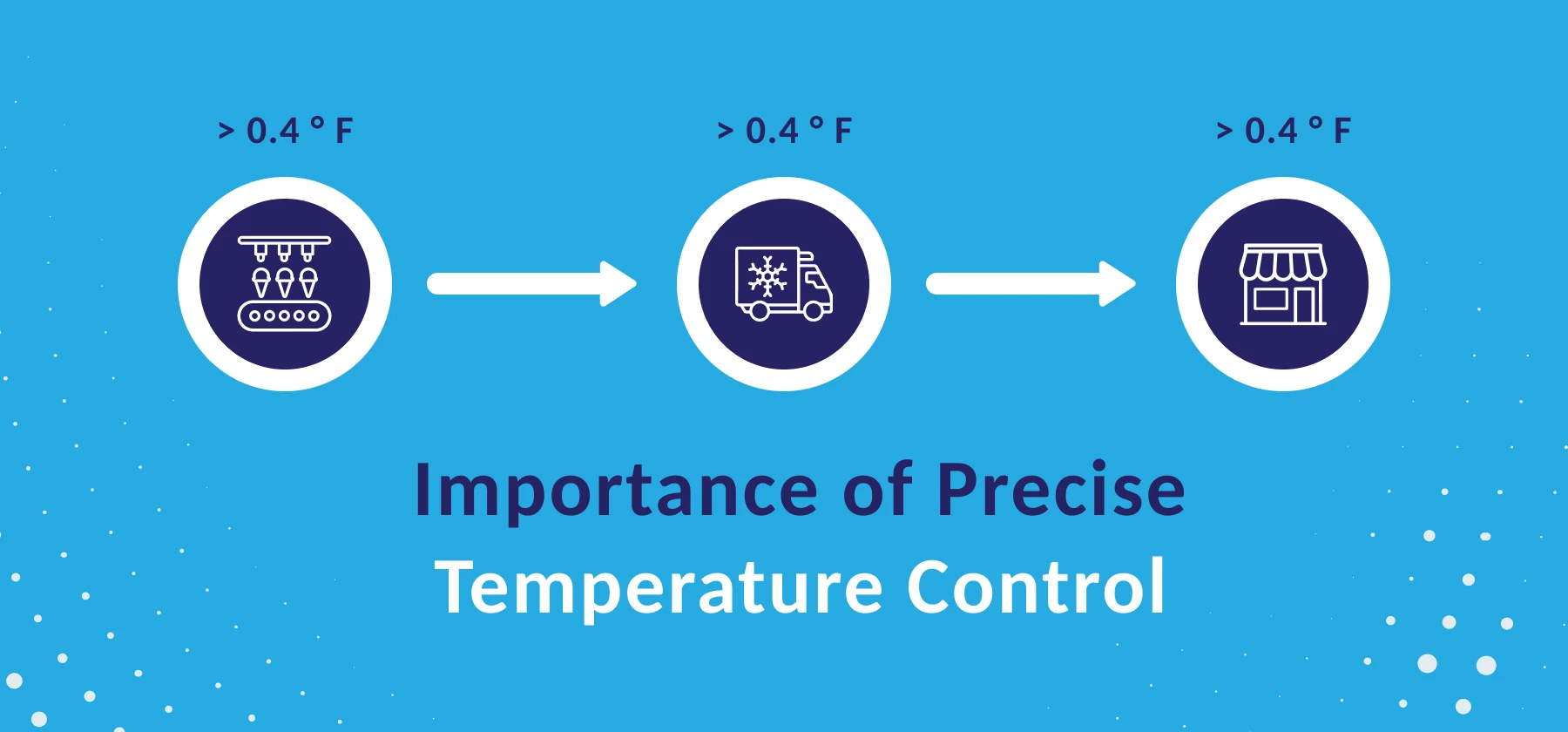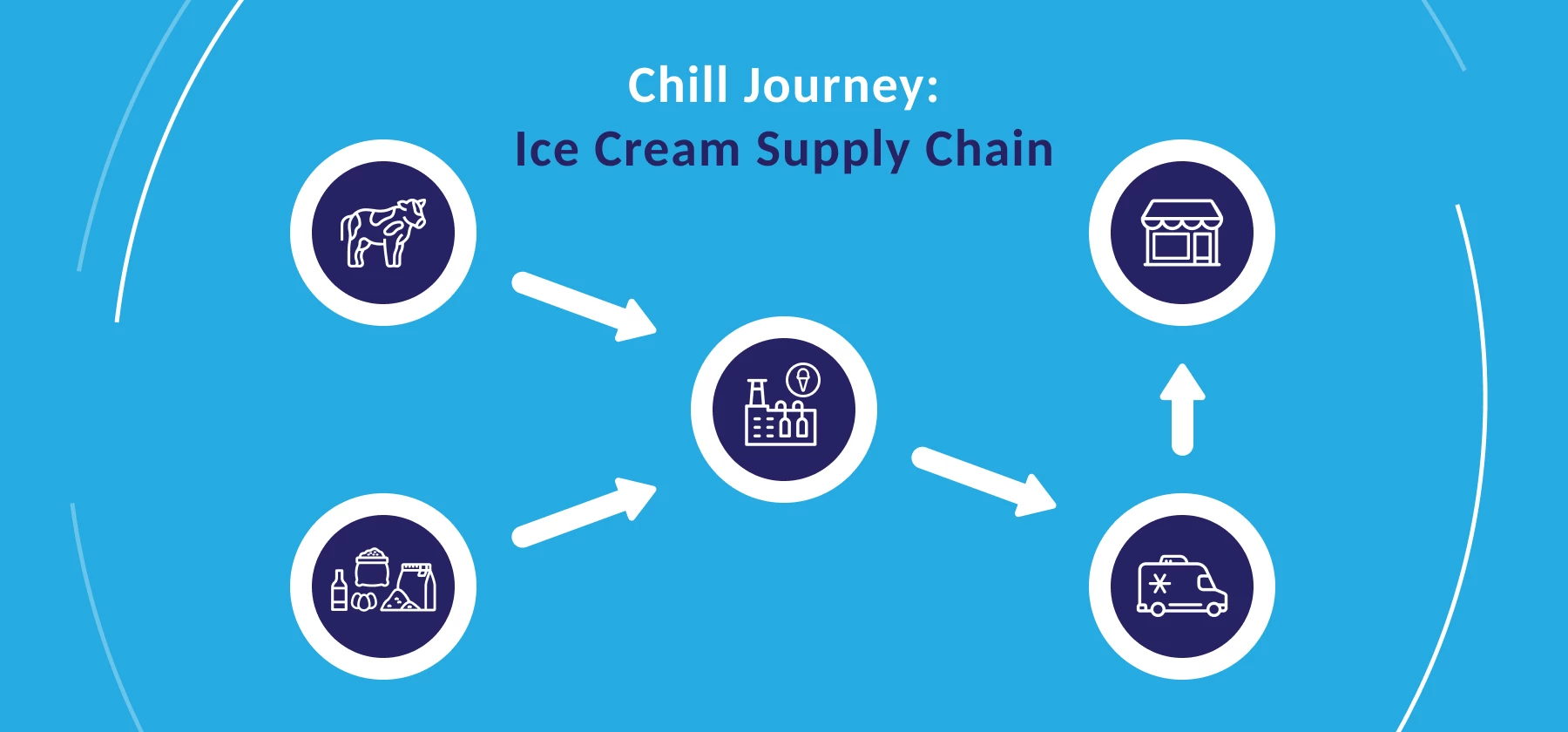
Have you ever thought about how thorny the path of your favorite ice cream from the manufacturing facility to your local sweets shop is? You’d be surprised how many stages it had to go through so you could enjoy it on a sunny day. Its journey is a masterclass in precision, coordination, and, most importantly, temperature control. This complex voyage begins with sourcing high-quality dairy and flavor ingredients, often from diverse and scattered locations. The supply chain involves farmers, flavor houses, manufacturing units, and distribution networks.
From the very moment ice cream is produced or even earlier, maintaining the perfect temperature comes out on top. Even a slight deviation can transform this sweet treat into an unsalvageable mess. This is where specialized transportation, like refrigerated small trucks or vans, comes into play. These vehicles excel at handling smaller, more delicate loads, ensuring the ice cream’s integrity at every stage. From the dairy to your spoon, every scoop of ice cream is a testament to a meticulously managed cold chain, where each stage is as vital as the next in delivering that perfect blend of flavor and texture.
Importance of Precise Temperature Control

“Keep it cold” is a strict rule to live by throughout the entire ice cream supply chain. The right consistently cold temperature is crucial, as it directly impacts ice cream’s quality, texture, and flavor integrity. This frozen dessert is particularly sensitive to temperature fluctuations, which can cause it to melt and refreeze, forming ice crystals and a grainy texture that diminishes its creamy allure.
The temperature control begins right from the dairy farms and ingredient suppliers. As these components travel towards manufacturing facilities, the role of refrigerated logistics becomes extremely important. This is where companies like Reefer Van Network (RVN) stand out, providing tailored transportation solutions that ensure a seamless cold chain. With its fleet of refrigerated vans, RVN guarantees precise temperature regulation in transit, preventing any quality degradation.
During the production phase, the importance of temperature control escalates significantly. Here, ice cream is pasteurized, homogenized, and then rapidly frozen, a process requiring meticulous temperature monitoring. Post-production, as the ice cream embarks on its final journey to retail outlets and eventually to consumers, RVN’s specialized transportation services ensure that this cold treat remains at an optimal frozen state, making every scoop a testament to a perfectly executed cold chain.
Stages of the Ice Cream Supply Chain

The ice cream supply chain is a long journey segmented into distinct stages, each playing a critical role in the overall process:
Dairy Farms and Ingredient Sourcing
Everything begins at dairy farms, where high-quality milk and cream form the foundation of ice cream. Simultaneously, other key ingredients like sugar, flavors, and additives are sourced from various suppliers. Ensuring the freshness and quality of these ingredients is crucial, as they significantly influence the final taste and texture of the ice cream.
Production Facilities:
Once gathered, the ingredients are transported to production facilities. Here, they undergo pasteurization, homogenization, and mixing to create the ice cream base. This stage is critical in determining the ice cream’s quality, necessitating strict temperature controls and hygienic conditions to avoid contamination and ensure safety.
Freezing and Packaging
The ice cream must be rapidly frozen to create the smooth texture we all love. After freezing, it is packaged in various sizes and styles, catering to different market segments. The packaging process must be efficient and sanitary, preventing any exposure to temperatures that could initiate melting.
Distribution and Retail
This is where RVN shines. The packaged ice cream is transported in refrigerated small trucks or vans to various distributors and retailers. These vehicles ensure that the ice cream remains at a consistent freezing temperature, which is crucial for maintaining its texture and preventing spoilage.
Consumers
The final stage is delivery to consumers through retail stores or direct delivery services. This stage requires the ice cream to be stored in freezers until it reaches the hands of the consumer, ensuring that the last scoop is as perfect as the first.
Challenges in Ice Cream Logistics
Transporting ice cream requires each movement to be perfectly timed and executed. The challenges in ice cream logistics are multifaceted, with melting risks and quality maintenance at the forefront. Unlike many other products, ice cream requires an unbroken cold chain to retain its quality, making its logistics a complex and delicate endeavor.
The most significant challenge is the strict temperature requirements. Ice cream must be kept at temperatures below -20 °C (- 4°F) to maintain its texture and prevent melting. This necessitates specialized refrigerated transportation solutions, like those offered by RVN, equipped with advanced temperature control systems to handle such extreme conditions. Even minor deviations can lead to melting, followed by refreezing, which affects the ice cream’s molecular structure, resulting in a less smooth texture and diminished flavor quality.
Another challenge lies in the distribution strategy. Ice cream’s sensitivity requires a direct and rapid transit route from production to consumption points to minimize exposure to fluctuating temperatures. RVN addresses this by implementing efficient routing and expedited delivery services, ensuring the ice cream spends the least possible time in transit.
Loading and unloading are also critical moments where ice cream is vulnerable to temperature variations. RVN’s skilled logistics team ensures that these processes are swift and occur in temperature-controlled environments to prevent any quality compromise.
Last but not least, seasonal demand spikes present another challenge. During peak summer months, the demand for ice cream surges, putting extra pressure on logistics to maintain quality while meeting increased volume requirements. Thanks to its adaptable and scalable logistics solutions, RVN efficiently handles that, ensuring that every tub of ice cream arrives in perfect, scoop-ready condition even in the face of soaring demand.
Role of Technology in Supply Chain Management
The integration of cutting-edge technology in the ice cream supply chain has revolutionized how carriers monitor and maintain ideal conditions during transit. Reefer Van Network (RVN) stands at the forefront of this innovation, utilizing a suite of sophisticated tools and software to ensure the quality of ice cream is preserved from factory to freezer.
RVN’s key technological advancement is the use of real-time temperature monitoring systems. These systems provide continuous temperature tracking, alerting logistics managers to any deviations from the required conditions. RVN harnesses this technology to maintain constant vigilance over their refrigerated vans, ensuring the ice cream remains in a deep freeze state throughout its journey.
GPS tracking is another critical tool, offering precise location monitoring of the shipments. This technology improves route optimization for quicker delivery and enhances the product’s security, a crucial factor considering the value of the cargo.
RVN employs advanced logistics management software. This software optimizes route planning, inventory management, and delivery schedules, streamlining the entire supply chain process. It allows for proactive management, anticipating potential issues before they arise, and ensuring that every tub of ice cream is delivered efficiently, safely, and deliciously.
RVN’s Unique Solutions
Reefer Van Network (RVN) distinguishes itself in ice cream logistics with its unique approach to transporting smaller ice cream loads. In an industry where maintaining quality and freshness is vital, RVN’s fleet of refrigerated small trucks and vans offers a specialized, efficient solution tailored to the unique needs of ice cream distribution.
These compact refrigerated vehicles are designed for agility and precision. Unlike larger refrigerated trucks, RVN’s smaller vans can navigate through urban landscapes and reach retail outlets that are less accessible, ensuring timely and efficient delivery. This is crucial in reducing transit times, a critical factor in maintaining ice cream’s optimal condition.
All RVN’s smaller vans are equipped with state-of-the-art refrigeration technology. This allows for precise temperature control, essential for keeping ice cream at its required deep-freeze temperatures. The size of these vans also facilitates better temperature uniformity, ensuring that each pint of ice cream is consistently kept at the ideal temperature, thereby preserving its quality and extending its shelf life.
RVN’s approach is highly scalable and flexible, easily accommodating varying load sizes. This adaptability ensures that both large-scale ice cream manufacturers and artisanal producers can benefit from RVN’s expert logistics, guaranteeing that every batch, regardless of its size, is delivered with the same level of care and quality control.
Key Points
Efficient cold supply chain management is half the battle in the ice cream industry. The journey from farm to freezer is accompanied by an array of challenges, each requiring meticulous attention and precision. Handling these challenges is the job of specialized logistics companies like Reefer Van Network (RVN). With their technology-advanced refrigerated vans and deep understanding of ice cream logistics, RVN ensures that this beloved treat reaches consumers precisely as intended: perfectly frozen, delightfully creamy, and irresistibly flavorful.
RVN’s commitment to maintaining the integrity of ice cream through cutting-edge technology and expert logistics solutions highlights the vital role of dedicated supply chain management. It takes ice cream logistics to a new level, preserving the ice cream magic from the dairy farm to the delighted consumer.
Back to blogYou may also be interested in

Cold Chain After Customs: Solving the First Domestic Mile
When cold chain shipments cross borders, most logistics attention focuses on getting the goods safely through customs and into the country. But a critical and often overlooked phase follows immediately after: the first domestic mile. This segment, which involves moving goods from the port of entry to the next point in the cold chain (such […]

What Is the Proper Temperature for a Refrigerated Delivery Truck
Refrigerated delivery trucks, commonly known as reefer trucks, are the backbone of the cold chain logistics industry. These vehicles are designed to transport perishable goods while maintaining specific temperature ranges to preserve freshness, prevent spoilage, and comply with health and safety regulations. Whether it’s fresh produce, frozen meats, dairy products, pharmaceuticals, or floral arrangements, each […]
